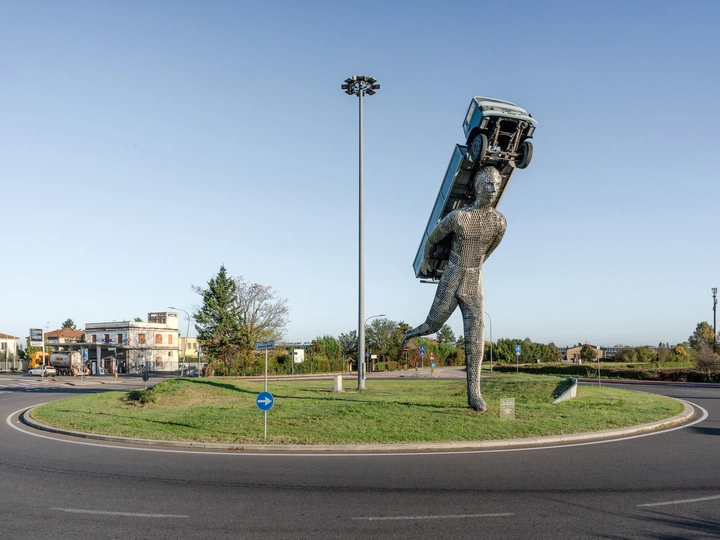ROTONDA EMILIA

Giovanni Fabbri
Margherita Lia Tommasi
We are a multidisciplinary team with expertise in art, architecture, photography, and design. Our practice originates from the encounter of different skills and develops through shared research on territories, visual languages, and forms of spatial and social activation.
Nicola Biagetti (Bologna, 1995) is a visual artist, photographer, and designer. He lives and works between Bologna and Milan. His research focuses on the relationship between human beings and space—natural, artificial, and virtual. He works with photography, walking as a practice, and the body as a perceptive tool. He collaborates with multidisciplinary groups, developing projects ranging from reportage to participatory installations, with a particular focus on practices of territorial activation.
Margherita Lia Tommasi (Rome, 1993) is an architect and co-founder of the Rara collective. She studied in Rome, Seville, and Rio de Janeiro. She has collaborated with international studios such as RCR Arquitectes (Spain) and OBRA Architects (USA), and since 2020 she has been working with Labics (Rome). Her work focuses on urban regeneration through the recovery and reuse of historic buildings, transforming them into new cultural and social spaces that reactivate the urban fabric and strengthen the identity of places.
Among the projects she has worked on: the expansion of Palazzo dei Diamanti in Ferrara and the restoration of the Central Pavilion at the Giardini of the Venice Biennale.
Giovanni Fabbri (Rome, 1995) is an architect and co-founder of Rara. He studied in Florence and Bogotá, Colombia, and contributed to the publication The Architecture of the Public Space (Park Books). His work ranges from temporary installations to the restoration of historic contexts, such as the village of Magnano (Biella), with a particular focus on the public and collective dimensions of space.
Rotonda Emilia is a research project that explores the proliferation of Monumental Roundabouts along the Via Emilia and its offshoots, aiming to grasp their political, ecological, and cultural implications.
State Road S9, which spans 260 kilometers from Rimini to Piacenza, cuts through one of the most productive and industrialized regions in Europe, a continuous and indistinct sequence of urban centers, industrial zones, historic cities, and agricultural areas. It is a geographical landscape that the photographer Luigi Ghirri once described as “an endless emporium of the modern.”
Amid glittering signs, factories, fields, and service stations, roundabouts, were introduced in the early 2000s to streamline traffic, and appear one after another along the Via Emilia. At the center of these circular junctions, is a “void” space with no productive function which becomes a fertile ground for unexpected forms of visual communication. Thus, hundreds of Monumental Roundabouts have emerged.
These installations range from large-scale monuments to local gastronomic products, to sculptural reinterpretations of major industrial brands, and artworks commissioned by public administrations, becoming true visual landmarks in the landscape. The variety of contributors, ranging from local artists to international architecture firms, demonstrates that a monumental roundabout is no longer merely an advertising tool, but a work of political and cultural significance.
As mirrors of collective identity, roundabouts bear witness to a specific relationship with the territory. They are commercial symbols, political instruments, and reference points for those who travel through or live in the region. Through photographic observation, these structures become a critical lens on the industrial community, their relationship with the places they inhabit, and the challenges of the contemporary era.